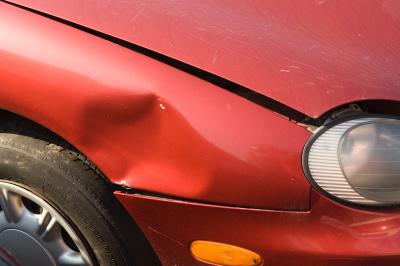
A car accident can have many unfortunate consequences, whether you are rear-ended by a driver using his cell phone or at fault in a head-on collision. Even after insurance claims and bills for car repair, you can expect another longer lasting financial consequence: the value of your car will depreciate. In theory, a vehicle can be brought back to its original market value with proper repairs. But the fact is, even with perfect repairs, a car is not worth what it was before it was crashed. This subjective depreciation is called diminished value. Diminished value can be approximated in several ways.
Determine the pre-accident value of the vehicle. This can be done using a car value resource, such as the Kelley Blue Book.
Hire a professional to repair the damaged vehicle. Ask the professional for an estimate of the effect of the damage on the value of the car.
Consider factors that determine the extent of the diminished value of a repaired vehicle. These include the year, make, model, pre-accident condition, type of accident, and the extent of the damage to the vehicle. The pre-accident value can be diminished by as much as 18 percent.
Take the vehicle to a dealership to determine its trade-in value. Keep in mind that the trade-in value will be lower than the secondary market value of the vehicle.
Hire a professional to appraise the diminished value of the vehicle post accident and repair.